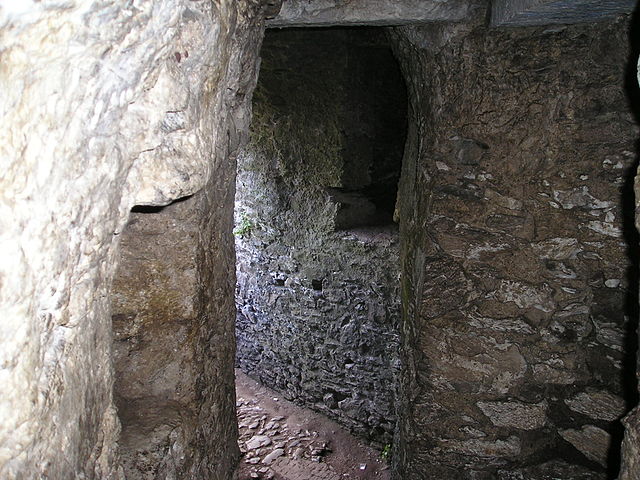A torture chamber is a room where torture is inflicted. The medieval torture chamber was windowless and often built underground, dimly lit and specifically designed to induce horror, dread and despair.
An artist's depiction of a torture chamber of the Inquisition, ca. 1736. The Inquisitors and the clerk are seen on the right. The Inquisitors were present to hear the confession, as soon as the torture victim gave up resisting, and the clerk recorded it. The strappado i.e. the rope and pulley system through which the victims, having their hands tied behind their backs and the lifting rope attached to their wrists, were raised and then lowered violently from the chamber ceiling, is visible on the right.
The Tower of London and Traitor's Gate. In the Middle Ages and into the Tudor and Stuart periods, torture was carried out in its chambers
Artist's depiction of the strappado, including the weight hanging from the victim's ankles. On the left the Brazen bull is illustrated
Entrance to the Palace of Inquisition at Cartagena
A dungeon is a room or cell in which prisoners are held, especially underground. Dungeons are generally associated with medieval castles, though their association with torture probably derives more from the Renaissance period. An oubliette or bottle dungeon is a basement room which is accessible only from a hatch or hole in a high ceiling.
The dungeons of Blarney Castle, Ireland
A dungeon door in the Zrinski Castle in Čakovec, Croatia






